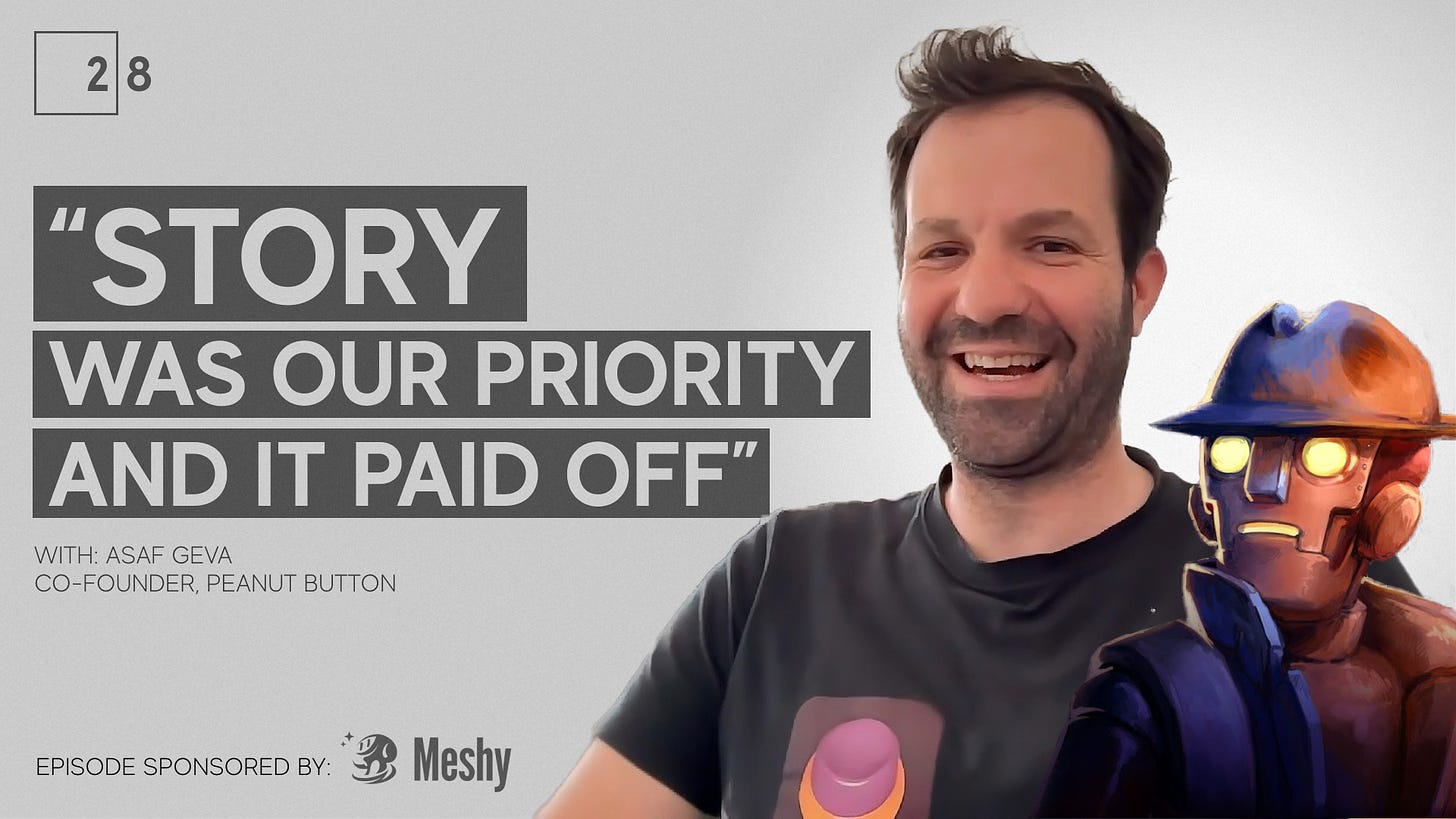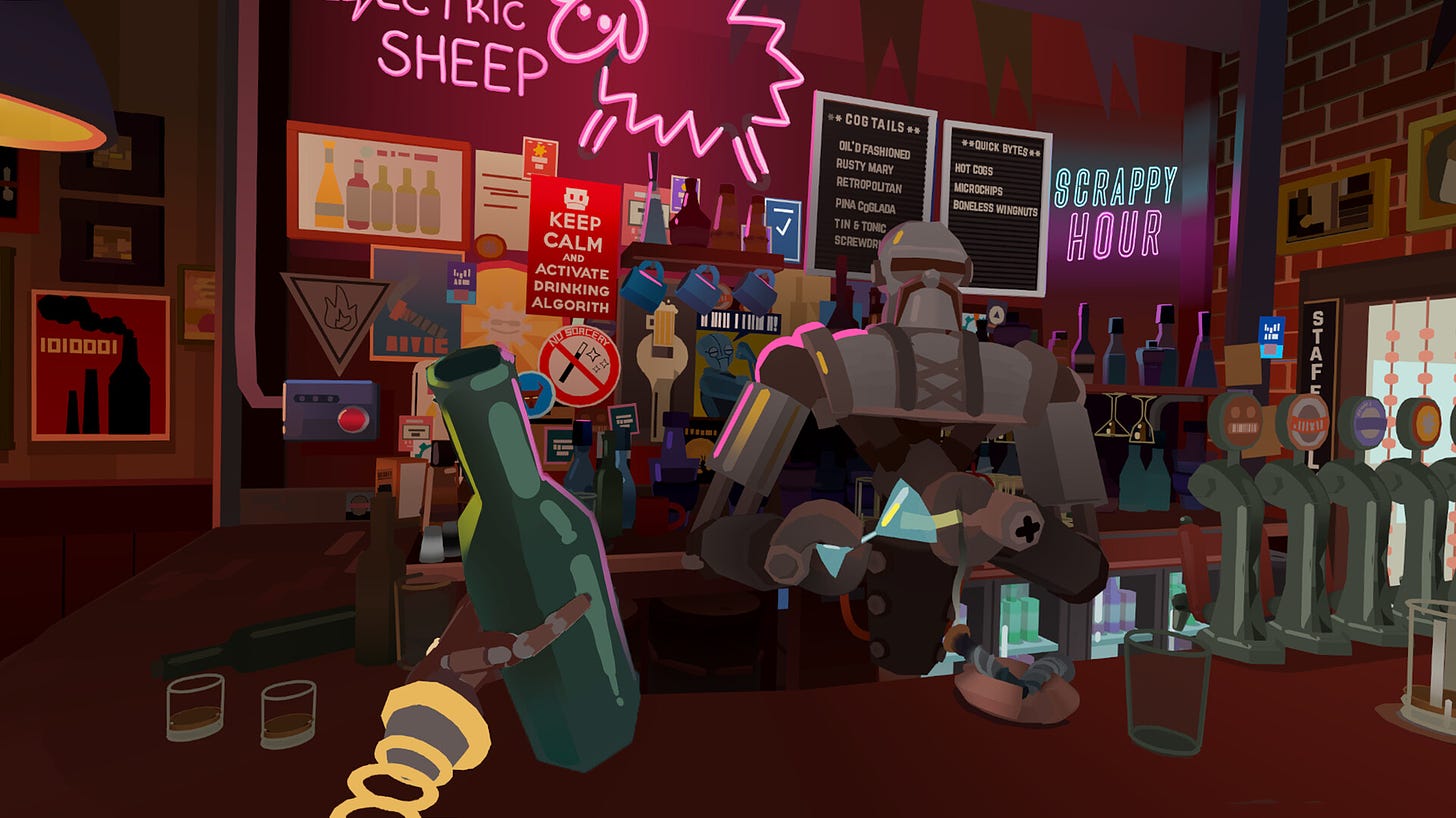How Retropolis 2 got 4.9 ⭐ on the Meta Store
Today we will Learn about the origins, challenges, and success of Retropolis: a story-driven point-and-click adventure game with a stellar rating on the Meta store. We will learn about their storytelling techniques, how they managed to grow their team and launch a second episode.I will share the free spinoff of the franchise that you can try right now in mixed reality.
The newsletter is also shared with our 10k audience on LinkedIn and if you would like to become a sponsor just answer this email or contact me on LinkedIn 👉 Gabriele Romagnoli.
Interview with Asaf Geva
Can you share the origin story of the Retropolis franchise?
Asaf Geva: It all started with me and my brother Ael playing around with VR. We saw huge potential in creating immersive experiences and gradually turned our hobby into something bigger. We got a bomb shelter turned studio from our municipality, which gave us a workspace. As COVID lockdowns hit, we assembled a small team of dreamers and started working on Retropolis. We had no budget, but with the help of friends and a lot of passion, we managed to launch the game on the Meta store.
What were the key factors that contributed to the success of Retropolis 1?
Asaf Geva: Timing played a huge role. We launched when the Meta Quest platform was growing rapidly, and there was a high demand for new content. Our game stood out because it offered a unique and engaging story, even if it was short. The community and streamers picked it up, which helped us gain traction. Additionally, our relentless focus on quality storytelling and immersive experiences resonated with players.
How did you approach storytelling in your point-and-click adventure game?
Asaf Geva: We focused on giving players a limited set of options that felt satisfying and immersive. Initially, we tried more complex and “physics-based” interactions common in other VR games, but they drained our energy and left little time for storytelling. By simplifying the mechanics, we could ensure each interaction was meaningful. This approach helped us prioritize the narrative and create a more engaging experience for players.
How did you utilize Quill in the design and development process?
Asaf Geva: Quill was a game-changer for us. It's a painting and animating tool available for PC VR that allowed our artists to create and animate directly within the same space. This made the process more intuitive and cost-effective. Having our artists work in VR eliminated many obstacles and streamlined the production. The result was a beautiful, stylized look that fits perfectly with our vision for Retropolis. You can read more about how the team implemented Quill in their workflow in this article.
How do you see the future of VR creative tools like Quill?
Asaf Geva: I believe the future of VR creative tools is promising. Tools like Quill offer a unique and intuitive way to create in 3D, which is invaluable for artists. As hardware becomes more accessible and these tools continue to improve, I expect more creators will adopt them. They streamline the creative process and allow for a more direct and immersive approach to content creation, which will be essential as VR and AR continue to grow.
What was it like growing your team from three to six people for Retropolis 2?
Asaf Geva: Growing the team was both exciting and challenging. For the first game, we were just three full-timers. By the time we started on Retropolis 2, we expanded to six full-time members. This growth allowed us to take on more ambitious projects and refine our processes. It also meant we could bring in more diverse skills, which was crucial for making the second game more polished and complete.
What were some specific improvements made from Retropolis 1 to Retropolis 2?
Asaf Geva: Retropolis 2 included several improvements based on our experience with the first game. We added more mechanics like rotating hands and interacting with objects to enhance immersion. We also introduced a more complex inventory system and refined our storytelling techniques. These improvements helped create a richer and more engaging experience for players, building upon the foundation of the first game.
What role did player feedback play in the development of Retropolis 2?
Asaf Geva: Player feedback was essential. We conducted regular playtests and carefully observed how players interacted with the game. This helped us identify areas for improvement and make adjustments based on what resonated with players. For example, the inventory system was added later based on feedback, and we refined the game’s humor and dialogue through continuous iteration and testing.
How did you manage to make the player so immersed in the story?
Asaf Geva: Giving players a defined identity was one fo the most important factors. In VR, having a backstory and character traits helps players immerse themselves in the narrative. We ensured that players could see themselves through mirrors and character interactions, which reinforced their role in the story. This approach made it easier for players to connect with the game and feel like active participants in the narrative.
How did you incorporate humor and sarcasm into the game effectively?
Asaf Geva: There was a lot of trial and error. We playtested scenes extensively and made adjustments based on player reactions. Our scriptwriter, Ael, did a fantastic job crafting witty dialogue, and our voice actor, Amir, brought it to life with his improvisation skills. Humor in VR is tricky, but by continuously refining and testing, we managed to deliver jokes that resonated with players.
What advice would you give to indie developers working on VR projects?
Asaf Geva: My advice would be to start small and focus on what you can do well with your available resources. Regular playtesting is crucial—observe how players interact with your game and be willing to iterate based on feedback. Don’t be afraid to reach out to the community for support and feedback. Lastly, stay true to your vision and find creative solutions to overcome budget and technical constraints.
What can fans expect next from Peanut Button and the Retropolis series?
Asaf Geva: While we haven’t officially announced anything yet, we are working on developing the concept for Retropolis 3. It’s something we’re very passionate about and are keen to explore further. Additionally, we have a mixed reality spin-off called Retropolis: Dotline, which is a casual spatial puzzle game available for free on Meta Quest. We’re excited about the future and are always looking for new ways to push the boundaries of VR storytelling.
Check out the full interview right here 👇
Product Spotlight: A Mixed Reality Puzzle with a storytelling twist
Puzzle games tend to be quite simple but the Peanut Button team managed to add some character to this mixed reality spinoff of the Retropolis Franchise. Instead of being presented with a menu to pick the level the whole experience starts with a lightweight narrative around space and time travel that sees the player progressing through more challenging puzzles and collect reward to add decorations to the environment.
That’s it for today, and don’t forget to subscribe to the newsletter if you find this interesting
See you next week






